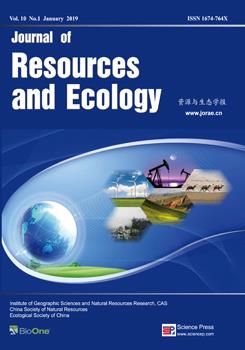Based on the interactive development of new industrialization, rapid urbanization and agricultural modernization (IUAM), and from the viewpoint of interactive responses and supply-demand relationships between regional water resources carrying capacity and economic-social development, this paper puts forward the concepts and characterization methods of water resources relative intensity (WRI), water resources carrying rate (WCR) and sustainable index of water resources system (WSI). Considering the catastrophic trait of water resources carrying capacity and its contradictory relationship with WRI, a modified Catastrophe Model, which combines Catastrophe Theory and Fuzzy Mathematic Theory, was introduced to perform a multi-objective and multi-criterion comprehensive assessment of the sustainability of water resources carrying capacity (WSCC) based on benchmarking. According to these concepts and models, land WSCC for the China mainland was set as an example for empirical analysis. The results showed that at the scale of first-grade water regions, Liaohe River, Yangtze River and Pearl River regions had high WRI of domestic water, while Northwestern Rivers, Southeastern Rivers regions and Yangtze River region in some years had high WRI of eco-environment water. However, they were all in a downtrend, while the other four northern regions had low WRI in an uptrend. The agricultural WRI in Songhua River, Yellow River and Northwestern Rivers regions were relatively high and industrial WRI in Songhua River, Yangtze River and Pearl River regions were also relatively high. At the provincial scale, WSCC of urban domestic water was relatively stable, WSCC of eco-environment was obviously fluctuating, and WSCC of agriculture and industry were constantly rising. Overall, WRI in the China mainland generally decreased. The convergence of provinces with high consumption intensity of water resources and spatial spillover of WUE in high WCR provinces promotes water resources development and utilization, progressing toward doubly sustainable development. In the future, China should try to find new ideas and methods of dynamic management of regional water resources and unified management of basin water resources, building on the foundation of traditional water resources planning. Meanwhile, water resources should be considered in regional PRED (population, resources, ecology and development) systems for integrated dispatching and optimizing configuration so that the improvements of WSCC and harmonious development of water resources and regional populations, eco-environment, economy and society can be achieved.
How to translate text using browser tools
1 January 2019
The Conceptual Model and Its Empirical Studies of Sustainable Carrying Capacity of Water Resources: A Case Study of China Mainland
Zang Zheng
ACCESS THE FULL ARTICLE
China mainland
hydrography
multi-objective optimization
supply-demand relationship
sustainability






